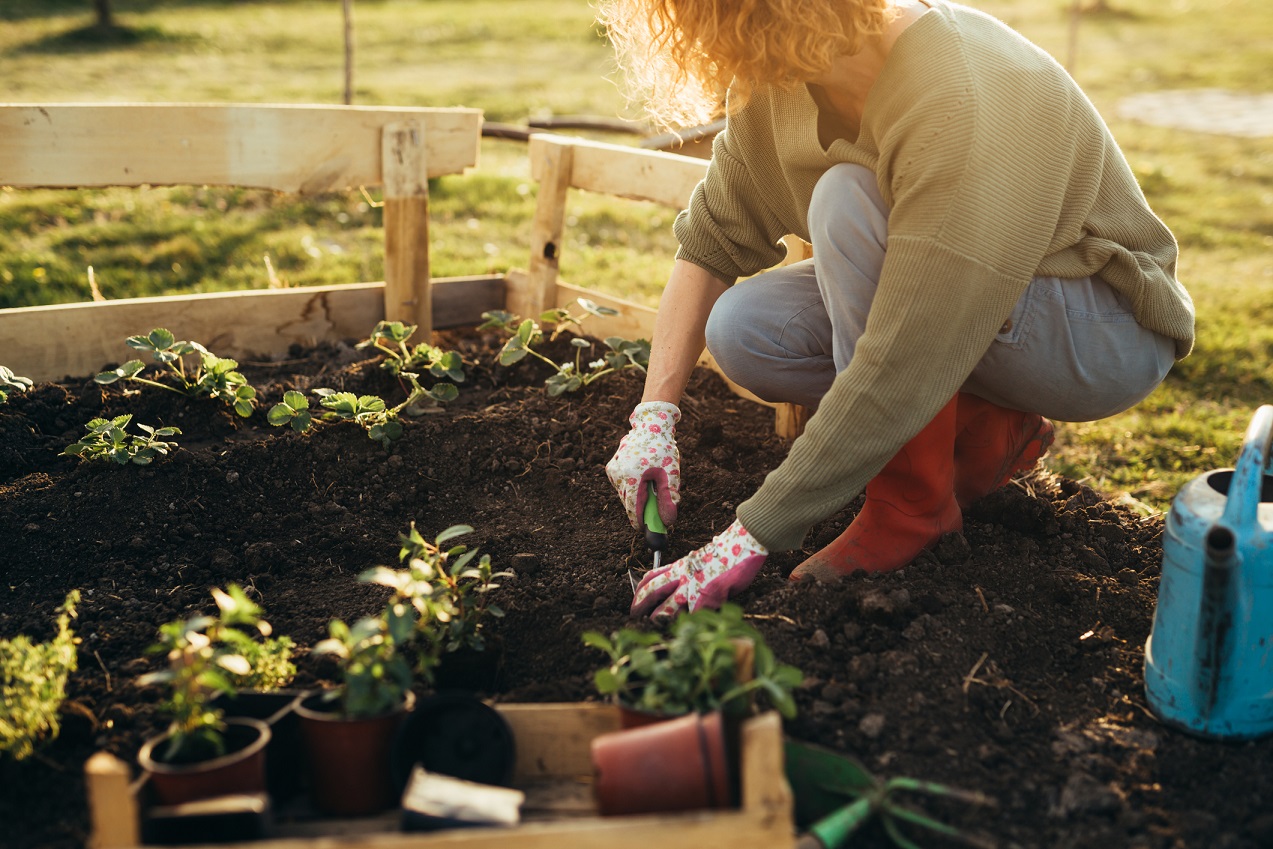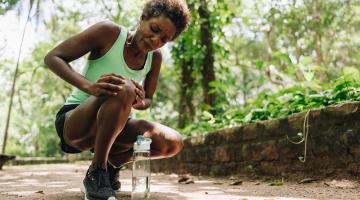A Certified Hand Therapist’s Top Tips for Safe Gardening
Author

Kathy Kowalski, OTR/L, CHT
Along with adding a pop of color and beauty to your yard, gardening is a great way to get active and enjoy the spring weather – once the rain stops, of course.
While gardening is often a slower-paced activity, it isn’t without its risks.
The United States Consumer Product Safety Commission (CPSC) reports than Emergency Departments across the United States treat more than 400,000 injuries each year caused by outdoor garden tools.
Common gardening injuries include crush injuries, lacerations, contact burns, overuse injuries, and infections due to contact with bacteria or fungi in soil.
As a certified hand therapist, I’ve seen my share of gardening-related injuries. To enjoy an injury-free gardening season, please keep the tips below in mind.
Set realistic goals and don’t overdo it
Particularly in early spring, gardening can seem like an overwhelming task.
There’s yard debris to clean up after a long winter, plants to prune, bulbs to plant, and mulch to put down. At times, gardening can seem more like a full-time job than a hobby!
However, it’s important to take it slow and pace yourself.
It’s tempting to try to finish your entire “to-do” list in a single weekend, but this increases your risk of overuse injuries.
If you’re feeling tired, stop for the day. Don’t push yourself through fatigue or discomfort.
Take breaks over the course of the day as well, particularly if your gardening project requires heavy lifting or repetitive motion.
Stretch and warm up your body before starting in the garden
After a season away from the garden, stretching is a good way to get your body ready for lifting, digging, and planting.
While many people remember to stretch their backs or legs before strenuous activity, don’t forget about your hands!
Prior to gardening, perform each of these hand stretches to warm up your hands and wrists:
- Begin in a standing position. Lace your fingers together with your palms facing outward. Keeping your elbows straight, raise your arms over your head. You should feel a stretch in your wrists.
- Place your hands together so your palms are touching. Gently push your hands together while lowering them at the same time. You should feel a stretch in your wrists.
- Begin in a standing position with one arm in front of you, palm facing the ceiling. With your other hand, apply a gentle, downward pressure on your fingers, bending your wrist and keeping your elbow straight. You should feel a stretch in your wrist. Repeat with the other hand.
Aim to hold each stretch for a count of ten and repeat each stretch three times.
These stretches take just a few minutes to complete and can make a world of difference in how your body feels before and after gardening.
Always use the appropriate gardening and protective equipment
Getting your gardening equipment out of the shed, basement, or garage is a key rite of spring.
Once you’ve dusted off your tools, make sure you use them!
Using appropriate tools and gloves can not only reduce your risk of injury, but also make gardening easier on your body.
- Wear gloves whenever you’re working in the garden. Silicone gloves are an excellent option, as they protect your skin from abrasions or infections while also decreasing the force required for gripping. This, in turn, reduces joint pain and fatigue.
- Use wide-handled tools for joint protection. Larger-sized handles help decrease the force needed to grip, protecting the smaller joints in your hand. This can help decrease the potential for repetitive use injury or exacerbating conditions like arthritis. To measure the ideal handle size, touch your index finger to your thumb; the round circle made by that motion is about the size of handle you should use. You can increase the handle size of existing tools by using tape or pipe insulation.
- Use a basket or wheelbarrow to carry supplies to the garden, especially if you’re transporting large quantities of heavy dirt or mulch. If using a basket, carry it with both hands to evenly distribute the workload and minimize stress on the hands.
Kathy Kowalski, OTR/L, CHT is an occupational therapist and certified hand therapist.
Learn more about Occupational Therapy and Hand Therapy at South Shore Health.
Author

Kathy Kowalski, OTR/L, CHT








